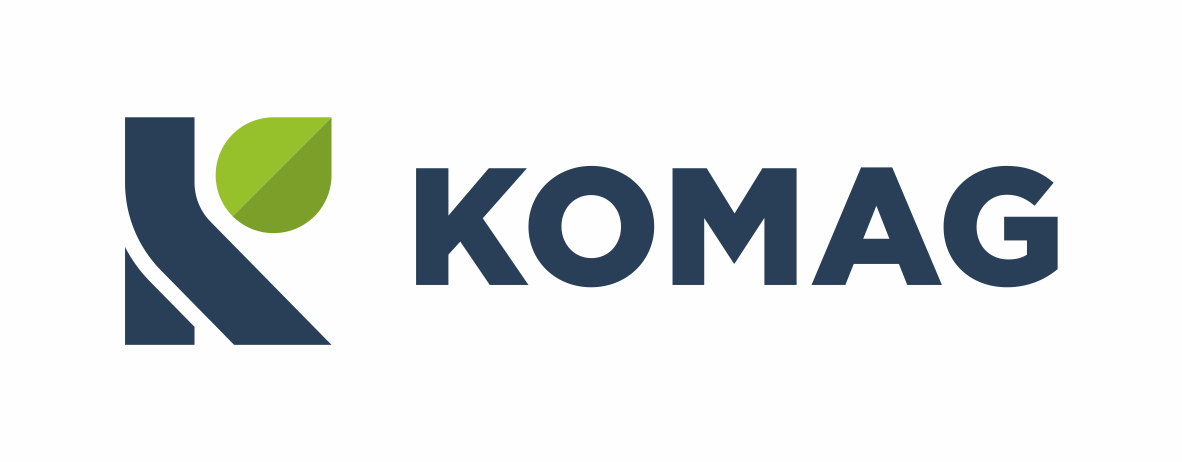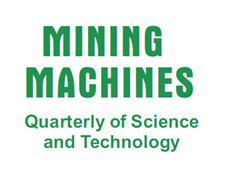Redakcja naukowa: Marek Jaszczuk
Monografia nr 2
Gliwice 2008, 148 s.
ISBN 978-83-60708-22-4
cena egz. 35,00 zł
W pracy przedstawiono syntetycznie wyniki projektu, którego celem było ustalenie podstawowych zasad działania zintegrowanego systemu sterowania, opracowanie i przetestowanie algorytmów i procedur sterowania oraz oceny stanu technicznego podstawowych maszyn i urządzeń ścianowego systemu mechanizacyjnego, a także rozwój układów niezawodnej transmisji danych.
Przeprowadzono analizę interakcji maszyn i urządzeń, stanowiących elementy ścianowego systemu mechanizacyjnego. Ustalono wymagane cechy układów regulacyjnych, parametrów mierzonych i wskaźników binarnych, niezbędnych dla zapewnienia wysokiej dyspozycyjności i pełnego wykorzystania potencjału kombajnowego sytemu mechanizacyjnego.
Zaprojektowano rozproszoną strukturę zintegrowanego systemu sterowania, obejmującego połączone sieciowo układy sterowania poszczególnych podsystemów i urządzeń kompleksu ścianowego oraz dołową stację operatorską ze sterownikiem centralnym i powierzchniową stację nadzorczą. Przeprowadzono wielokryterialną ocenę układów transmisji danych, spełniających wymogi bezpieczeństwa użytkowania w warunkach podziemnych, w aspekcie niezawodności przy zastosowaniu metody analizy hierarchicznej procesu AHP.
Założono, że w obecnej fazie projektu zachowane zostanie lokalne sterowanie kombajnem przez operatora. Opracowany system zapewnia uzyskanie wymaganej prędkości zabudowy stropu wyrobiska z uwzględnieniem dopuszczalnej długości niezabudowanego odcinka stropu. Ponadto nie dopuszcza do sytuacji zagrożenia wybuchem metanu i przeciążenia silników przenośnika ścianowego, poprzez dodatkowe ograniczenie prędkości posuwu kombajnu, w stosunku do wartości aktualnie zadanej przez operatora. W ścianie wyposażonej w sekcje obudowy ze sterowaniem elektrohydraulicznym system zapewnia koordynację przemieszczania kolejnych sekcji obudowy, dosunięcia przenośnika i ruchu osłony czołowej, z położeniem kombajnu i fazą cyklu urabiania. System umożliwia przemieszczanie co drugiej sekcji, w trybie pozwalającym na zwiększenie prędkości posuwu kombajnu, w stosunku do wynikającej z czasu cyklu przemieszczania sekcji. System na bieżąco kontroluje poprawność pracy urządzeń i parametrów ich pracy. W razie potrzeby generuje sygnały ostrzegawcze i alarmowe, a w krańcowych przypadkach powoduje zatrzymanie kombajnu. Dla celu sterowania szacowane są parametry charakteryzujące proces technologiczny, między innymi, takie jak: wydajności urabiania i obciążenie przenośnika.
Interfejs operatora zapewnia wizualizację stanu i parametrów maszyn i urządzeń systemu, sygnalizację stanów ostrzegawczych, alarmowych i awaryjnych, archiwizację parametrów procesu i prezentację przebiegów czasowych wybranych parametrów, diagnostykę stanu urządzeń oraz możliwość nastawy wartości granicznych i kryterialnych poszczególnych parametrów.
Dla celu testowania zaproponowanych procedur opracowano program symulujący przebieg procesu technologicznego, obejmujący przebieg obciążenia silników kombajnu, przy różnej prędkości posuwu i przenośnika ścianowego, przy różnym stopniu załadowania, sekwencji przesuwania sekcji obudowy i przekładki przenośnika oraz emisji i stężenie metanu dla różnej intensywności przewietrzania wyrobiska. W trakcie licznych testów potwierdzono poprawne działanie systemu w zakresie realizacji funkcji sterujących oraz wizualizacji przebiegu i parametrów procesu. Zaprogramowane ograniczanie prędkości posuwu zapewnia utrzymanie założonych parametrów pracy sterowanych maszyn. System sterowania pozwala na wygenerowanie charakterystyk technicznych poszczególnych maszyn i urządzeń pozwalających na diagnostykę ich stanu technicznego i ocenę prawidłowości doboru do warunków danego wyrobiska ścianowego.
Integracja układów sterowania maszyn i urządzeń systemu mechanizacyjnego oraz ich rozbudowa o dodatkowe sensory i funkcje zapewni prawidłową współpracę wszystkich elementów systemu i automatyczne dostosowywanie ich parametrów pracy do warunków obciążenia. Wprowadzenie zintegrowanego sterowania zwiększy bezpieczeństwo i poprawi warunki pracy załogi. Przyczyni się także do wzrostu konkurencyjności polskich maszyn górniczych na rynku krajowym i międzynarodowym.
Współautorzy:
Piotr Cheluszka - Politechnika Śląska
Dariusz Jasiulek - CMG KOMAG
Marek Jaszczuk - Politechnika Śląska
Jan Kania - Politechnika Śląska
Dariusz Kot - CEiAG EMAG
Antoni Kozieł - CMG KOMAG
Józef Markowicz - Politechnika Śląska
Joanna Rogala - CMG KOMAG
Piotr Sobota - Politechnika Śląska
Zbigniew Szkudlarek - CMG KOMAG
Stanisław Szweda - Politechnika Śląska
Marek Szyguła - CMG KOMAG
Jerzy Tejszerski - CMG KOMAG
Integrated control of the technological system long- wall face – loading point
Results of the project that was aimed at determination of main principles of operation of integrated control system, development and testing of the control algorithms and procedures as well as proper selection assessment of main machines of the longwall system and also development of reliable data transmission systems were synthetically presented in the paper.
Analysis of interaction of machines that make the longwall system was made. Required features of control systems, measured parameters and binary factors, which are indispensable to ensure high availability and full operational potential of the shearer system, were established.
Scattered structure of integrated control system, which includes sub-systems and machines control of the longwall system as well as underground control station with the central controller and the surface supervision station in a network connection, was designed. Multi-criteria assessment of data transmission systems, which meet safety criteria for underground operations, as regards reliability, was carried out using the method for hierarchic analysis of problem (AHP).
It was assumed that at the present stage of the project local control of shearer by the operator would be kept. The developed system en- sures achieving of required rate of the roof support with permissible length of exposed roof section. Besides due to additional limitation of shearer haulage speed, in relation to the value currently set by the operator, methane explosion hazard and motor overload can be eli- minated. In the longwall panel equipped with powered roof supports and electrohydraulic control the system ensures coordination of movement of following roof supports, alignment of AFC and front shield movement to the shearer position and a cutting phase. The system enables moving every second roof support unit in a mode allowing an increase of sharer haulage speed in relation to the advance resulting from duration of support movement cycle. The system controls systematically correct- ness of machines operation and operational parameters. When necessary it generates warning and alarm signals and in the extreme cases stops the shearer. The parameters, which characterize technological process, such as mining output and AFC load, are assessed for the control purposes.
Operator’s interface enables the following: visualization of machines and equipment state and operational parameters, signaling the warning, alarm and emergency states, archiving the process parameters and pre- sentation of time runs of the selected parameters, diagnostics of condition of the machines as well as possibility of setting the limiting and criterial values of each parameter.
The software simulating technological process including time runs of shearer’s motors load at difference haulage speed and load of motors of the AFC at different load level, different sequence of roof supports movement and AFC transfer as well as methane emission and concentration for different intensity of longwall ventilation was developed to test the suggested procedures. During numerous tests, proper operation of the system as regards realization of control functions and visualization of the process parameters and their time runs was confirmed. The programmed limitation of haulage speed ensures maintaining assumed operational parameters of controlled machines. The control system enables generating technical characteristics of each machine and equipment that enables diagnostics of their technical condition and machines assessment of their proper selection to the conditions of given longwall panel.
Integration of machines control systems and their extension by additional sensors and functions will ensure proper cooperation among all longwall system components and automatic adjustment of their operational parameters to load conditions. Implementation of integrated control system will increase work safety and will improve work conditions for the miners. The system will also contribute to increasing competitiveness of Polish mining machines on Polish and international market.





 Badanie bezpieczeństwa wyrobów
Badanie bezpieczeństwa wyrobów Klaster Maszyn Górniczych
Klaster Maszyn Górniczych